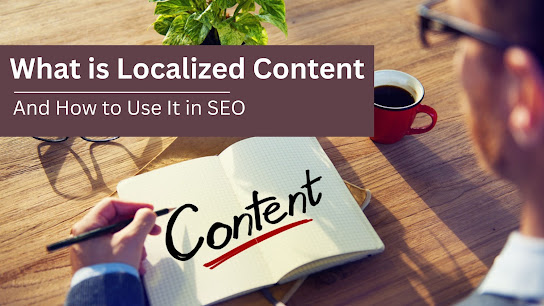In an increasingly globalized digital world, businesses are recognizing the importance of tailoring their content to meet the needs of local audiences. Localized content is a crucial strategy for enhancing search engine optimization (SEO) and reaching target markets effectively. This article explores what localized content is, why it matters, and how to leverage it for SEO success.
What is Localized Content?
Localized content refers to content that is customized to meet the preferences, cultural norms, language, and specific needs of a particular geographic region or demographic. It goes beyond mere translation, incorporating local idioms, references, and values to make the content resonate with the local audience. Localized content can include:
- Website Copy: Adapting the text on your website to reflect local dialects and cultural references.
- Marketing Materials: Tailoring advertisements, brochures, and promotional materials to local tastes and traditions.
- Social Media Posts: Creating social media content that aligns with local trends and user behavior.
- Product Descriptions: Modifying product descriptions to address regional preferences and requirements.
- Customer Support: Offering customer service content that speaks to local concerns and expectations.
Introducing SFWPExperts specializes in WordPress website design and SEO, offering tailored solutions to enhance your online presence. Their expert team creates visually stunning, high-performing websites optimized for search engines, ensuring your site attracts and engages the right audience, driving growth and maximizing your digital impact.
Why Localized Content Matters
- Improved Relevance: Localized content enhances the relevance of your messaging, making it more appealing and relatable to the target audience. When content addresses local interests and concerns, it is more likely to engage users and drive conversions.
- Enhanced User Experience: By providing content that is culturally and linguistically appropriate, you improve the overall user experience. Users are more likely to interact positively with content that feels familiar and resonates with their local context.
- Increased Engagement: Localized content can lead to higher engagement rates, as users are more inclined to share and interact with content that reflects their own culture and experiences.
- Better SEO Performance: Search engines prioritize content that is relevant to users’ search queries and location. Localized content can improve your rankings in local search results, driving more targeted traffic to your site.
- Competitive Advantage: In competitive markets, localized content can set you apart from competitors who use generic, one-size-fits-all approaches. It demonstrates a commitment to understanding and addressing the needs of local audiences.
How to Use Localized Content in SEO
1. Conduct Local Market Research
Before creating localized content, it is essential to understand the local market. Conduct research to gather insights into local preferences, search behaviors, and cultural nuances. This research should include:
- Local Keywords: Identify keywords and phrases that are commonly used by the local audience. Tools like Google Keyword Planner, SEMrush, and Ahrefs can help you find region-specific search terms.
- Competitor Analysis: Analyze competitors’ localized content strategies to identify gaps and opportunities. Assess how competitors are addressing local needs and how you can differentiate your approach.
- Audience Insights: Understand the demographics, interests, and behaviors of your target audience in different regions. Surveys, focus groups, and social media insights can provide valuable information.
Read More: What is Localized Content and How to Use It in SEO
Read More Articles:
- Why do businesses need to focus on improving mobile website user experience (UX)?
- Various Types of Guerrilla marketing Strategies
- How To Improve Web Accessibility For Better UX (User-Experience)?
- Google's New Guidelines On H1-H6 Headings: What You Need to Know for SEO
- 3 Effective Strategies To Humanize AI-Generated Content
- Top 10 Best Website Builders To Consider in 2024
- 10 Best AI Social Media Tools To Try In 2024
- Various Types of Guerrilla marketing Strategies
Visit Site: Website Design Los Angeles Agency




